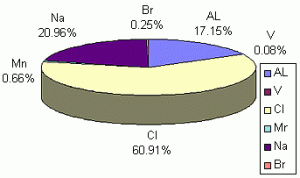Limnological Institute, SB RAS, Irkutsk
Head of the Institute:
Mikhail A.Grachev, Corresponding Member of RAS, Professor
P.O. Box 4199, Irkutsk-33, 664033, Russia
Tel.: (3952) 460504
Fax: (3952) 460405
email: info@lin.irk.ru
Principal researchers:
T.V.Khodzher,
Head of the Laboratory of Hydrochemistry and Chemistry of the Atmosphere
email: khodzher@lin.irk.ru
V.A.Obolkin, PhD, senior researcher
V.L.Poternkin, PhD, senior researcher
Project objectives
Studies of peculiar composition patterns of atmospheric admixtures and precipitation in background continental areas of central Asia, and estimation of potential acidification of soil, vegetation, and waterbodies in the region under study.
Background and significance of objectives
The tenn “background areas” (remote sites) is now commonly used to denote the purest areas of the globe, atmospheric admixture and precipitation composition there are “conditionally” considered the natural background, relative to which the extent of pollution in other more anthropogenically affected territories may be measured. Present-day world net of background atmosphere-monitoring stations involves 20 stations, none of which is on the Russian territory. The present project proposes organisation of such a station in Russian Central Asia, on the premises of Mondy astronomical station ( 51.6 N, 101.0 E). This station has in the past several years been successfully developing as an international station for examining background characteristics of the atmosphere. It belongs to the Institute of Solar-Terrestrial Physics SB RAS, and is located at the Russia-Mongolia border, on a Khamar-Daban range peak (2005 m above sea-level). The station is supplied with industrial electricity and has no sources of anthropogenic releases into the atmosphere. The nearest industrial centres – Irkutsk, Baikalsk – are more than 200 km away, and they are not in the way of prevalent atmospheric transportation flows towards the station.
A wide complex of experimental researches concerning chemical composition of atmospheric admixtures and precipitation is being conducted at the station at present using the most up-to-date equipment and chemical analysis techniques (see Appendix 1). Both Russian (Institute of Kinetics and Burning SB RAS, Novosibirsk; Institute of Global Climate and Environment, Moscow) and foreign organisations (Japanese EPA; Center for Advanced Technologies, Tokyo University; specialists in atmospheric chemistry from Antwerpen University (Belgium) and Institute for Atmospheric Physics, Maintz (Germany)) have shown much interest in the station. In a 17.09.98 letter signed by its chairman, Mr.V.LDanilov-Danilyan, the Russian State Ecology Committee has supported the proposal to organise a background monitoring station on the basis of the Mondy astronomical station. Further expansion of the monitoring program at the station and the establishment of its status as a world background station will depend only on how the financial problems are solved. The station is believed to be included into the Acid Deposition Monitoring Network in East Asia (EANET) starting from the year 2000, the technical preparation of these stations is performed by 10 Asian countries under Japanese leadership.
It also appears important to estimate a potential possibility of environmental acidification (soil, vegetation, lakes) in the background areas of Central Asia, as atmospheric precipitation in the background areas are known to have an acidification trend caused by long-distance transportation of atmospheric pollution. The principal source of atmospheric acidification in eastern Russia is China, especially its north-eastern provinces, and Russia is positively interested in lowering trans-border transportation in the region, and, correspondingly, in the functioning of an international stations network.
Research plan: approaches and methods
Monitoring methods and techniques for chemical analyses of samples are listed in Appendix I. The research objectives will employ the following approaches:
- the monitoring will provide data of regular synchronous observations of a large amount of atmospheric admixtures for different seasons, under different meteorological situations, which could therefore be processed using multifactor statistical methods to reveal the sources of these admixtures, to distinguish between natural and anthropogenic sources;
- observations of tracer elements of aerosols and gases parallel to analysis of air mass circulations will enable tracing the possibility of long-distance transportations from great anthropogenic sources, and possibly will allow a quantitative estimation of their contribution into the composition of atmospheric admixtures in the background areas and into acidification of atmospheric precipitation;
- to estimate the resistance of nature objects of the area against acidification, surface waters (in lakes, rivers), soils, vegetation will be analysed, and their buffering strength estimated.
Expected results
Data on the present-day quality of the atmosphere in the background area of the Russian central Asia will be obtained for:
- temporal variability of concentrations of admixtures will be investigated (using various time-steps) for different seasons and meteorological conditions;
- data of synchronous measurements of a large number of atmosphere admixtures will allow application of various multi-factor statistical analysis devices for the analyses of their variability, and this will help in revealing local natural sources of atmospheric admixtures and finding traces of remote, probably anthropogenic, sources;
- daily monitoring of tracer gases and aerosols (including radioactive admixtures) and directions of air mass circulations will allow an evaluation of possible contributions of particular anthropogenic sources into the concentration of atmospheric admixtures in the neighbourhood of the background station at Mondy.
List of publications of participants related to the project
-
Obolkin V., Potemkin V. The trace gases in atmosphere over Lake Baikal // IV Russian-French Seminar on the Application of Neutrons and Synchrotron Radiation for Condensed Matter Investigations: Abstracts; June 25-July 3,1996; Novosibirsk-Irkutsk, Russia. Dubna, 1996. – P. 44.
-
Khodzher T.V., Bufetov N.S., Golobokova L.P., Drozdova V.I., Kutsenogiy P.K., Makarov V.I., Obolkin V.A., Potemkin V.L. Investigations of disperse and chemical composition of aerosols in southern Lake Baikal // Geografiya i prirod. resursy; 1996. – № 1. – P. 73-79.
-
Van Malderen H., Van Grieken R., Khodzher T., Obolkin V., Potemkin V. Composition of individual aerosol particles above Lake Baikal, Siberia // Atmospheric Environment; 1996. – Vol. 30, № 9. – P. 1453-1465.
-
Khodzher T.V., Golobokova L.P., Obolkin V.A., Potemkin V.L., Netsvetaeva O.G. Daily and seasonal variations of atmospheric aerosol ion composition in southern East Siberia // Optics of the atmosphere and ocean. – 1997. – Vol. 10, № 6. – P. 650-655.
-
Khodzher T.V., Potemkin V.L., Golobokova L.P. The Sayany Sun Observatory (at Mondy) as a background station for studying atmospheric admixture transportation in Siberia // IV Session of the “Siberia Aerosols” Project Workgroup: Report abstract; 25-28 November 1997; Tomsk: Institute of Atmosphere Optics SB RAS; 1997:2.
-
Poternkin V.L., Obolkin V.A., Kliodzher T.V. An ivestigation of aerosols on the Arctic coast of Siberia // IV Session of the “Siberia Aerosols” Project Workgroup: Report abstract; 25-28 November 1997; Tomsk: Institute of Atmosphere Optics SB RAS; 1997. – P. 50-51.
-
Obolkin V.A., Khodzher T.V., Poteinkin V.L. Seasonal dynamics of elemental composition of atmospheric aerosols over Lake Baikal // Chemistry for sustained development; 1997. – Vol. 5, № 5.
-
Golobokova L.P., Obolkin V.A., Khodzher T.V., Netsvetayeva O.G., Poternkin V.L. Mondy station as a background for studies of pollutant transportation in the lower atmosphere of the Lake Baikal area // Optics of the atmosphere and ocean; 1998. – Vol. 11, № 6. – P. 636-639.
-
Obolkin V.A., Kliodzher T.V., Poternkin V.L. Comparative data on the chemical composition of aerosols in the continental and Arctic areas of East Siberia // Optics of the atmosphere and ocean. – 1998. – Vol. 11, № 6. – P. 632-635.
-
Matthias-Maser S., ObolkinV. KhodzherT., Jaenicke R. Seasonal variation of primary biological aerosol particles in the remote continental region of lake Baikal // Siberia J. Aerosol Sci. – 1998. – Vol. 29, Supl. l. – P. 545-546.
| List of parameters to be measured interval 1. Gases: |
Sampling | Method of examination | Note |
| O3 | 10 minutes | UVspectrometry | Automatic analysers with computer |
| CO2 | -“- | -“- | registration |
| SO2 | 24 hours | Absorption on filters with | |
| NH3 | -“- | subsequent lab analyses | |
| HNO3 | -“- | ||
| HCl | -“- | ||
| 2. Aerosols: Mass concentrationIon fraction: |
1 hour |
Nefelometry |
Continuous registration |
| 804, Cl, NOs HCO3; Na, Ca, Mg, NH4. |
24 hours |
Sampling on filters Ion chromatography, spectrophotometry, atomic absorption |
Limnological Institute SB RAS -“- |
| Elemental composition: All elements heavier than Na (including trace metals: Sb, As, In, Mn, V, Pb, Zn, Hg etc.) |
24 hours |
Sampling on filters X-ray-fluorescence analysis based on synchrotron radiation (XFA-SR) Inductively coupled plasma mass spectrometry (ICP-MS) |
Institute of Nuclear Physics SB RAS |
| Examination of single particles | Electron microscopy supplemented by XFA microprobe | Limnological Institute SB RAS the method allows determination of shape and composition of individual aerosol particles, to distinguish natural and anthropogenic ones |
|
|
Organic fraction: |
Several hours |
Sampling on filters with subsequent lab analysis (liquid chromatography) | Limnological Institute SB RAS |
| 3 .Atmospheric precipitation |
Hours or days |
The same methods as those for aerosols examination |
Wet depositions are collected by automatic collector, Dry depositions are calculated using air concentrations |
|
4. Meteorological observations; wind direction and speed, air temperature and humidity, summed solar radiation, soil temperature. |
Standard meteo timing; continuous registration possible |
Automatic registration using recorders or computers. |
(mg/m3)
Mass concentration of solvable fraction of aerosol in the Lake Baikal region.
Seasonal variability of ion fraction of aerosols (sum of ions) 1993-96.
The composition of aerosols on st.Mondy



